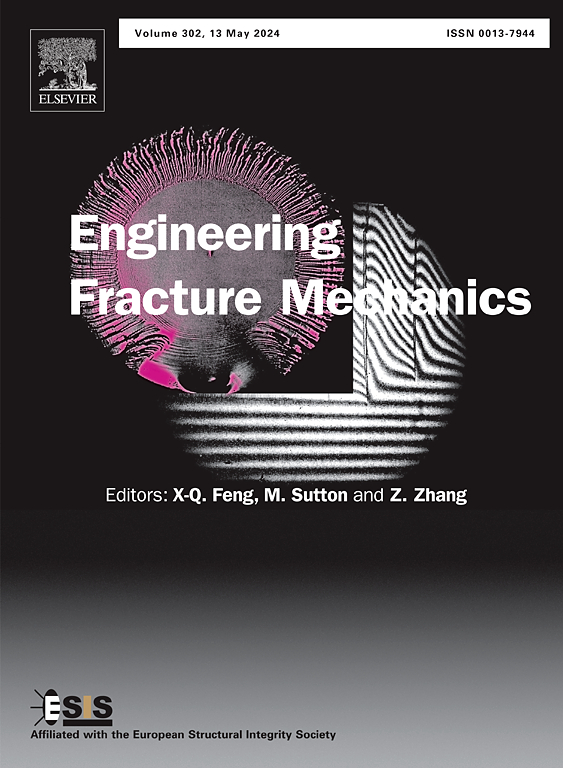A hybrid method of coupling phase field model and linear elastic model to simulate fracture using cell-based smooth finite element method and finite element method
IF 5.3
2区 工程技术
Q1 MECHANICS
引用次数: 0
Abstract
The phase field model’s computational efficiency is increased in this work by connecting it to the linear elastic model. Firstly, the whole region is split up into many subregions, and each region’s mechanical characteristics determine which matching solution scheme to use. The linear elastic model lowers computational costs by allowing the use of rougher mesh and solving problems in non-crack areas. Only crack patterns inside the fracture propagation region may be predicted using the phase field model. Secondly, the model is implemented in a hybrid computational framework, which combines the computational efficiency of the cell-based smooth finite element technique (CSFEM) with the traditional finite element method (FEM). Lastly, illustrative instances are applied to verify the coupled model. The findings demonstrate that the energy and mechanical parameters for the coupled model and the pure phase field model coincide quite well. In addition to reducing computation time, the simulation findings of the coupled model are identical to those of the pure phase field model, and the fracture trajectories of the test samples are unaffected regardless of the failure modes.
采用基于元胞的光滑有限元法和有限元法,提出了相场模型与线弹性模型耦合模拟断裂的混合方法
将相场模型与线弹性模型相连接,提高了相场模型的计算效率。首先,将整个区域划分为许多子区域,每个子区域的力学特性决定了使用哪种匹配解方案。线性弹性模型允许使用更粗糙的网格和求解非裂纹区域的问题,从而降低了计算成本。相场模型只能预测断裂扩展区内的裂纹形态。其次,将基于单元的光滑有限元技术(CSFEM)与传统有限元方法(FEM)的计算效率相结合,在混合计算框架中实现模型;最后,通过算例对耦合模型进行了验证。结果表明,耦合模型的能量和力学参数与纯相场模型吻合较好。除了减少计算时间外,耦合模型的模拟结果与纯相场模型的模拟结果相同,并且无论破坏模式如何,测试样品的断裂轨迹都不受影响。
本文章由计算机程序翻译,如有差异,请以英文原文为准。
求助全文
约1分钟内获得全文
求助全文
来源期刊
CiteScore
8.70
自引率
13.00%
发文量
606
审稿时长
74 days
期刊介绍:
EFM covers a broad range of topics in fracture mechanics to be of interest and use to both researchers and practitioners. Contributions are welcome which address the fracture behavior of conventional engineering material systems as well as newly emerging material systems. Contributions on developments in the areas of mechanics and materials science strongly related to fracture mechanics are also welcome. Papers on fatigue are welcome if they treat the fatigue process using the methods of fracture mechanics.

 求助内容:
求助内容: 应助结果提醒方式:
应助结果提醒方式:


